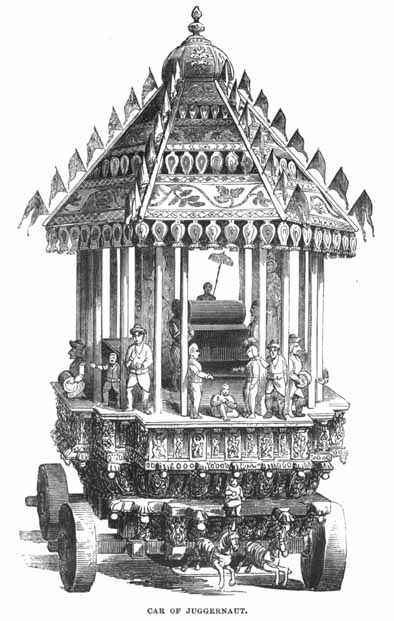Yesterday’s Carolina North outreach, once again, was heavy on promises – the vast possibility of grey goo, the escalating energy efficiencies of blue sky projections – light on details.
As a NC taxpayer, I’ve been waiting for UNC to produce a real, updated business plan reflecting 2007’s economic realities. Hey, we’re plunking down billions at the Carolina North craps table – it would be nice to have a quantitative, verifiable analysis of the project’s risk-reward profile.
Chancellor Moeser, you owe us NC taxpayers a reality-based report on our expected rate of return for our vast collective investment.
And, please, not another self-serving 2004 Market Street Services economic impact analysis report [PDF], which, to be charitable, was a fluffy confection spun from dreams of an enduring legacy, chunks of ad hoc economic observations and community boosterism of the worst calibre.
Your Carolina North quarterback, Jack Evans, reset the economic expectations yesterday (May 29th). Your team, with barely two months left of your self-imposed deadline, will have to drive hard to produce a believable economic impact report.
To give a small bit of perspective on how far we’ve come, here is UNC’s May 25, 2005 PR trumpeting the benefits of Carolina North:
Study shows Carolina North will be catalyst for jobs, tax revenue
CHAPEL HILL – Carolina North, the proposed living and learning campus of the University of North Carolina at Chapel Hill, will generate 7,500 local jobs and about $48 million in annual tax revenues by 2020, according to an economic impact study released today. It also has the potential to position Carolina as a leading national center of research and public-private partnerships, according to Market Street Services of Atlanta, which conducted the study for the university.
“Carolina North will expand Carolina’s multiple missions, boost innovation and redefine our engagement with the region, state and world,” said University of North Carolina at Chapel Hill Chancellor James Moeser. “The great news from this study is that Carolina, through Carolina North, can continue to be a catalyst for the economic transformation of our state.”
The Carolina North draft conceptual plan outlines concepts for mixed-use development at a 900-plus-acre tract of UNC-owned property one mile north of the main campus off Martin Luther King Jr. Boulevard (formerly Airport Road). The draft plan proposes to develop only about 25 percent of that total site over the next 50 to 70 years. Carolina North would include classrooms, labs, housing, schools, community spaces, offices and limited commercial space in a campus-and-village setting.
Carolina North would attract private companies to Chapel Hill to partner with university faculty to transform faculty research into products and
services to improve quality of life. Public-private partnerships would allow the university mission to grow at a time when state and federal funding are no longer growing at previous rates.
The Market Street study will be presented at Thursday’s (May 26) meeting of the university’s Board of Trustees. The study includes analysis of the projected economic impacts at the end of the project’s second phase (15 years) and at full build-out (50 years).
Other study highlights include:
· In the first two phases alone (15 years), the gains in the local and state economies reflect similar numbers to a medium-sized firm building new headquarters in the area year after year.
· By the end of phase 2 (approximately 2020)
Tax Impact: About $48 million in tax revenue annually
$26 million in state income tax
$14.6 million in state sales tax
$2.8 million in local sales tax
$5 million in property tax· Employment Impact:
7,500 full-time, ongoing jobs (non construction)
$433 million in annual salary and personal income
8,876 construction-related jobs
$353 million in salary and personal income (construction)· Business Revenue:
$600 million in annual business revenue (non construction)
$979 million in business revenue (construction)Plans for Carolina North are still in the conceptual design phase. Before the university can move forward to collaborate with the towns of Chapel Hill and Carrboro on the plans, it must resolve issues related to the university-owned Horace Williams Airport, which occupies part of the Carolina North tract.
The university announced in April 2002 that it would close Horace Williams Airport. In September 2002, the N.C. General Assembly passed legislation requiring the university to keep the airport open until January 2005. In July 2004, the legislature adopted language requiring the university to keep the airport open until an accessible replacement facility could be found for Medical Air, which serves the university’s Area Health Education Centers program.
The N.C. Senate recently passed a special provision that would allow the university to close the airport, provided that Medical Air operations have access to, or utilize, the Raleigh-Durham International Airport to serve the needs of patients, physicians and passengers associated with AHEC’s statewide programs.
The university’s Board of Trustees also will hear a report at its Thursday meeting about a consultants’ study to help the university identify an alternative site for an airport.
-30-
For a copy of the full economic impact study report, please go to: http://cn.unc.edu/economic_impact.pdf
Interviews with Market Street consultants can be arranged through News Services. In addition, for comment about the economic impact of Carolina North on the local community, reporters may call Aaron Nelson, executive director of the Chapel Hill-Carrboro Chamber of Commerce, at 919-967-7075.
I wonder if the Chamber’s Aaron Nelson, today, would give that report a passing grade?
Hard to believe given that today’s paucity of detail, the changing nature and scope presented yesterday and the rather obvious flaws ($5 million in property taxes? Really?) in Market Street’s Carolina North sales brochure.
